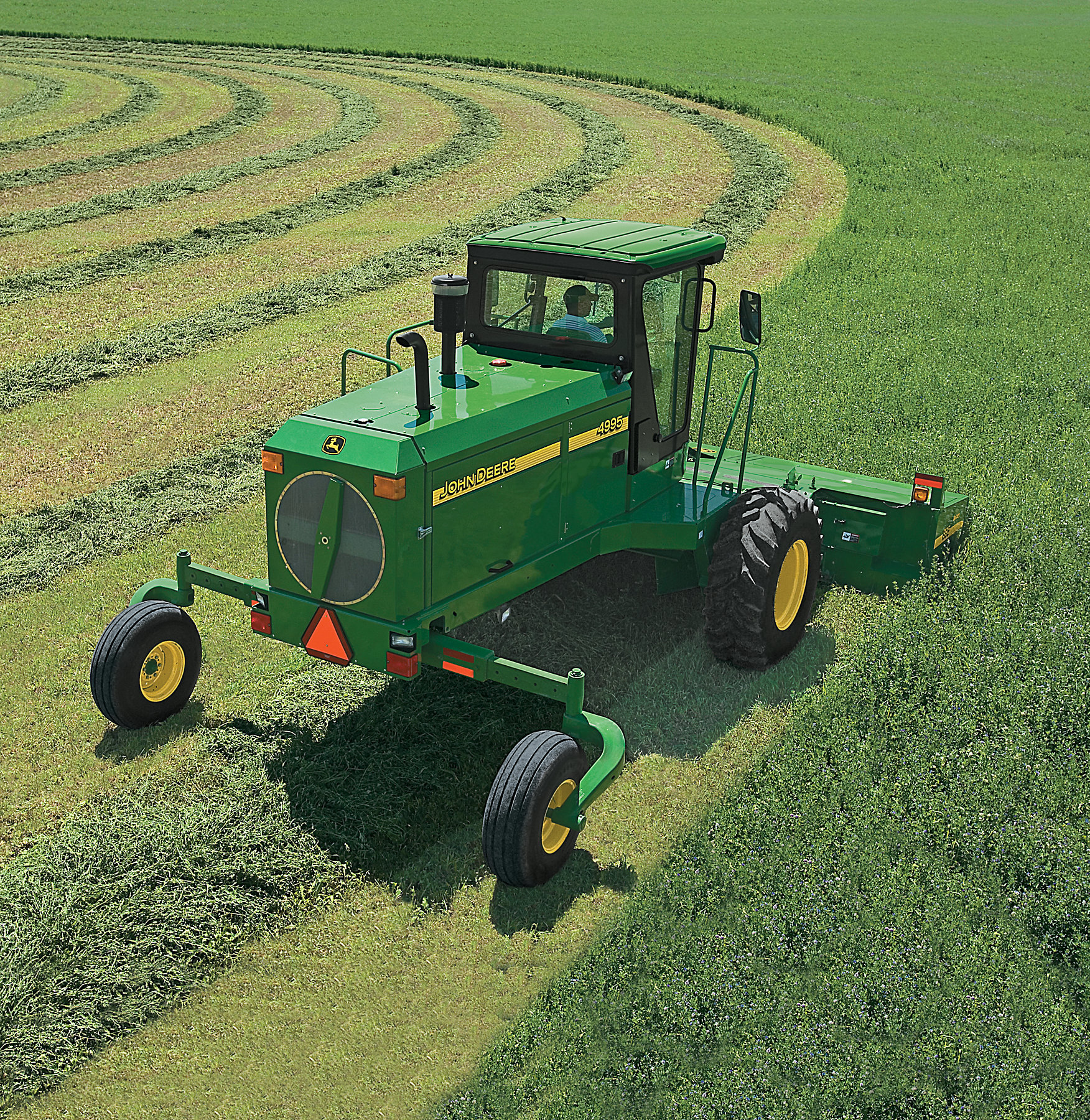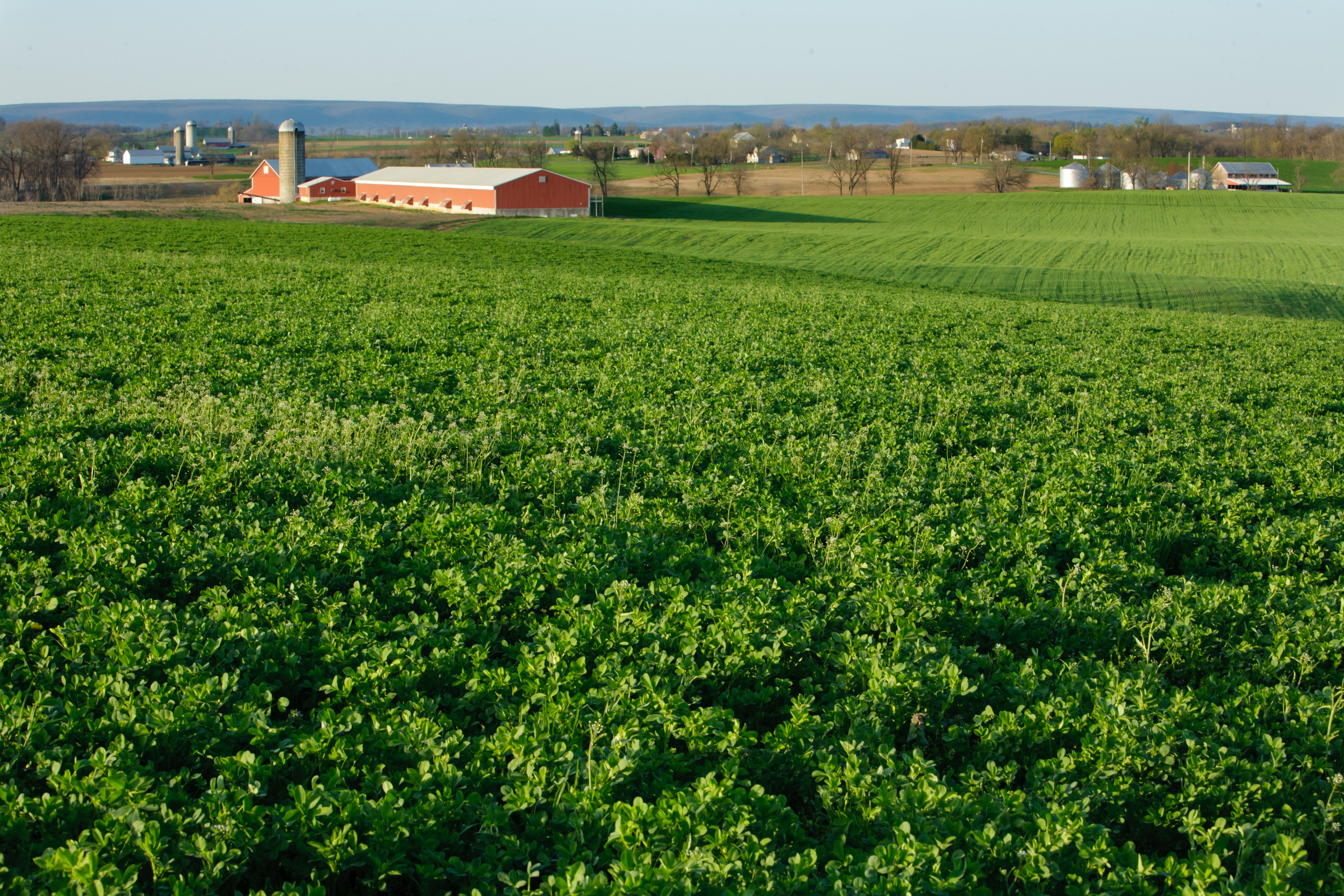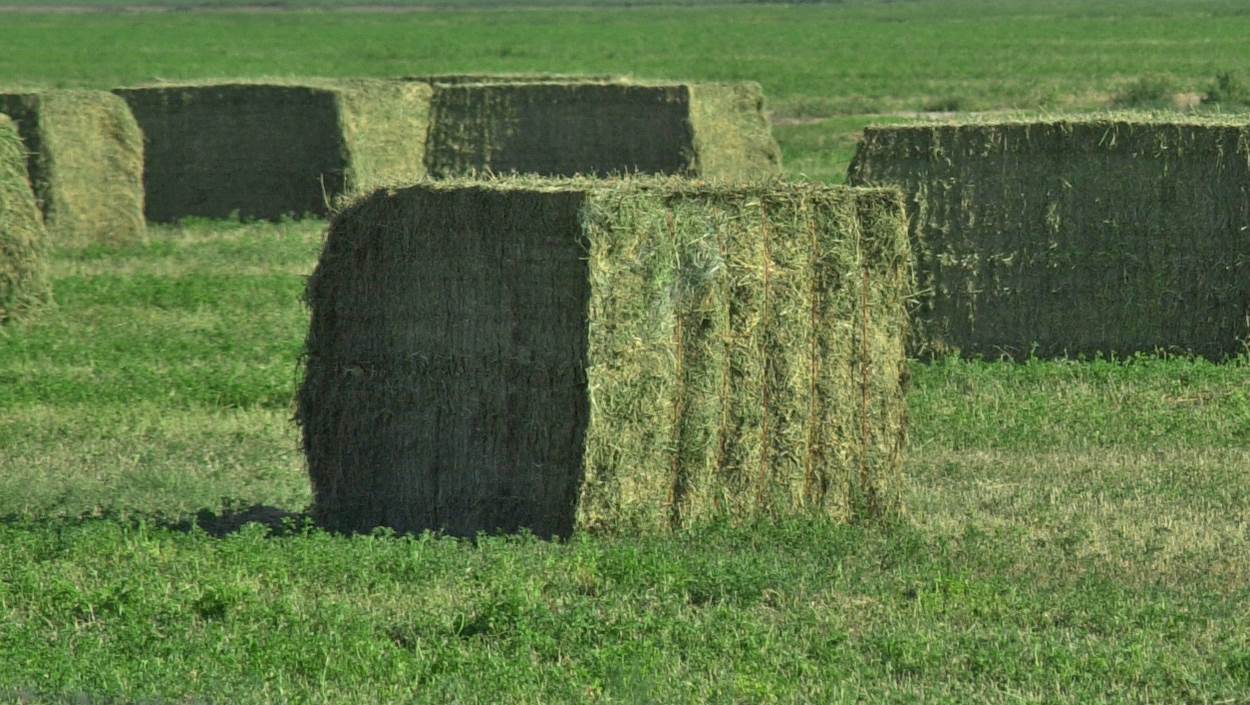Cut at the Proper Maturity Under Ideal Drying Conditions
Weather permitting, the ideal maturity to cut alfalfa is in the bud to 1/10th bloom stage. This maturity is the perfect blend of yield and high nutrient value. Alfalfa should be cut in the morning – leaving only 1 to 2 inches of stubble, and it should be conditioned when cut to disrupt the waxy cuticle on the stem. The exception to the recommendation of leaving a 1 to 2-inch stubble would be to leave more stubble (4 inches) during the last cutting of the season in order to catch snow and help the plants over-winter more successfully.
With the introduction of low-lignin alfalfa varieties, hay growers may have a wider harvest window without losing digestibility. This gives growers the flexibility to delay harvest to a later stage of maturity.
For example, harvesting three times at first flower has the potential to provide the same quality as four cuttings at bud stage while providing greater yields. In trials in Minnesota and Wisconsin, yields from an early flower harvest regime were from 15 percent to as high as 40 percent greater for delayed harvests after bud stage.1
To promote rapid drying, the alfalfa should be laid out in wide swaths that are at least 70 percent or greater the width of the cut row. Wide swaths increase overall hay quality due to two main factors – the hay dries faster, and hay cured in wide swaths has a lower ash content.
The Mechanics of Drying
The first phase of drying is moisture loss from the leaves through the stomata or pores in the leaf surface. These stomata allow moisture evaporation from the plant to cool it and carbon dioxide uptake from the air as the plant is growing. Stomata open in daylight and close when in dark and when moisture stress is severe. Cut forage laid in a wide swath maximizes the amount of forage exposed to sunlight thereby keeping more stomata open. This encourages rapid drying which is key at this stage because plant respiration or metabolism continues after the plant is cut. Respiration rate is highest at cutting and gradually declines until plant moisture content has fallen below 60 percent. Therefore, rapid initial drying to lose the initial 15 percent of water from the forage will reduce loss of starches and sugars and preserve more total digestible nutrients in the harvested forage. Conditioning does not affect this initial moisture loss.
The second phase of drying is moisture loss from both the leaf surface (stomata have closed) and from the stem. At this stage, conditioning can help increase the drying rate, especially as the forage becomes drier.
The final phase of drying is the loss of tightly held water, particularly from the stems. Conditioning is critical to enhance drying during this phase. Conditioning to break stems every two inches or scrape the waxy cuticle off will increase water loss through the waxy cuticle of the stem.2
Bale the Alfalfa Quickly at Optimum Moisture Levels
Alfalfa destined for hay should be raked or merged at 40 to 60 percent moisture to minimize leaf loss. On the average, 78 percent of alfalfa cut reaches livestock in the U.S. The remaining 22 percent is lost during mowing, raking, baling and storage. These losses of hay volume and quality are costly.3



